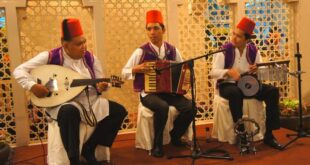by ASIFF HUSSEIN

Galle has something special about it. It is a blend of both the past and the present, the native and the colonial. It was here that the first Portuguese fleet led by Laurenco De Almeida sailed into the country nearly five centuries ago. It was here that the Dutch more than three centuries ago built their famous ninety-acre fort which still retains its old world charm with its high ramparts and ornate pepperpot towers. It was here that cottage industries such as turtle-shell ware, ebony ornaments and beeralu lace flourished about a century or so ago before gradually declining or passing into oblivion. Galle was no doubt once a leading centre of the native arts and crafts.
Native firearms
Housed in an old Dutch period building in the heart of Galle Fort, the Galle National Museum represents all that is Galle. Colonial weaponry, indigenous crafts or folk arts, it has it all. Here one will find a variety of Portuguese and Dutch swords including a rare Dutch cavalier sword as well as stone cannon balls dating back to Dutch times. Besides these, one could come across some interesting specimens of native firearms including a heavy double-barreled pistol manufactured by some ingenious Sinhalese smith as well as some gunpowder flasks of about the same period. There are besides these, a beautiful battle axe made of brass and iron said to be about two centuries old as well as a mugura or wooden club about a century or so old.
Extinct craft

As for native handicrafts, a great variety are represented here. These include turtle-shell ware including an antique jewellery box, spectacle frames, combs and bangles, all made of turtle-shell. There are besides these, a rare turtle-shell fan as well as nemi pana or bent combs made of turtle shell which were widely worn by the Sinhalese Muhandirams of yore as a head ornament. Also on display are various moulds for making turtle shell ware including moulds for jewellery boxes, spoons and bangles. This now extinct craft involved heating the turtle shells until they softened after which they were cut into little pieces and placed in a mould to obtain the desired shape. Manufacturing items out of turtle shell is no longer possible as turtles have been declared a protected species, so that one cannot easily come across such items these days. Beeralu lace

Also displayed here are an assortment of beeralu lace from the area including Samanala lace, Bakinimal lace and Gavum Karamal lace. Besides these is an old hand-made pillow lace crochet dated 1903. The art of lace-making was introduced by the Portuguese and has been traditionally handed down from mother to daughter. It still survives in Galle and Weligama though not on a scale one would have expected to find it a century or so ago.
Another little known industry which once thrived in Galle but today survives only in Kalegana is carved ebony ornaments, a few old specimens of which are displayed in the museum including a box and a figurine of an elephant.
Old masks

Galle was once well-known for its folk drama such as Kolam and it is not surprising therefore that one should come across a variety of old masks representing characters such as the Gamarala, Panikkale, Liyana Appu, Nonchi Akka, Nekati man, tiger and jackal. Besides these comical characters, one would come across masks of ferocious-looking demons such as Gara Yaka and Gurulu Raksha used in Tovil or exorcism ceremonies.
Also on display in a glass case is the official garb of a Sinhalese Muhandiram which may well go back to over a century. It includes a black coat, somana cloth, kastana sword and the Nemi Panava or bent comb worn as a head ornament.
Porcelain plates

Among the other interesting exhibits may be included an old kokis mould and other moulds for preparing sweetmeats dating back to the Dutch period, a Petetiya or water clock made of copper and shaped like a coconut shell with a hole in the middle and an assortment of vadimbu or eave tiles with engraven figures of goose, elephant and stylised lion used as far back as the 18th century. Other miscellaneous items include a serakkale or brass stand for partaking of rice by important personages, a behet karakaya or pill box used by native physicians and embroidered betel bags belonging to about the 17th to 19th centuries. Also fascinating are the colourful porcelain plates with a crescent in red used by the Moors of the area in the olden days.
 Asiff Hussein – Asiff Hussein Web Site
Asiff Hussein – Asiff Hussein Web Site




